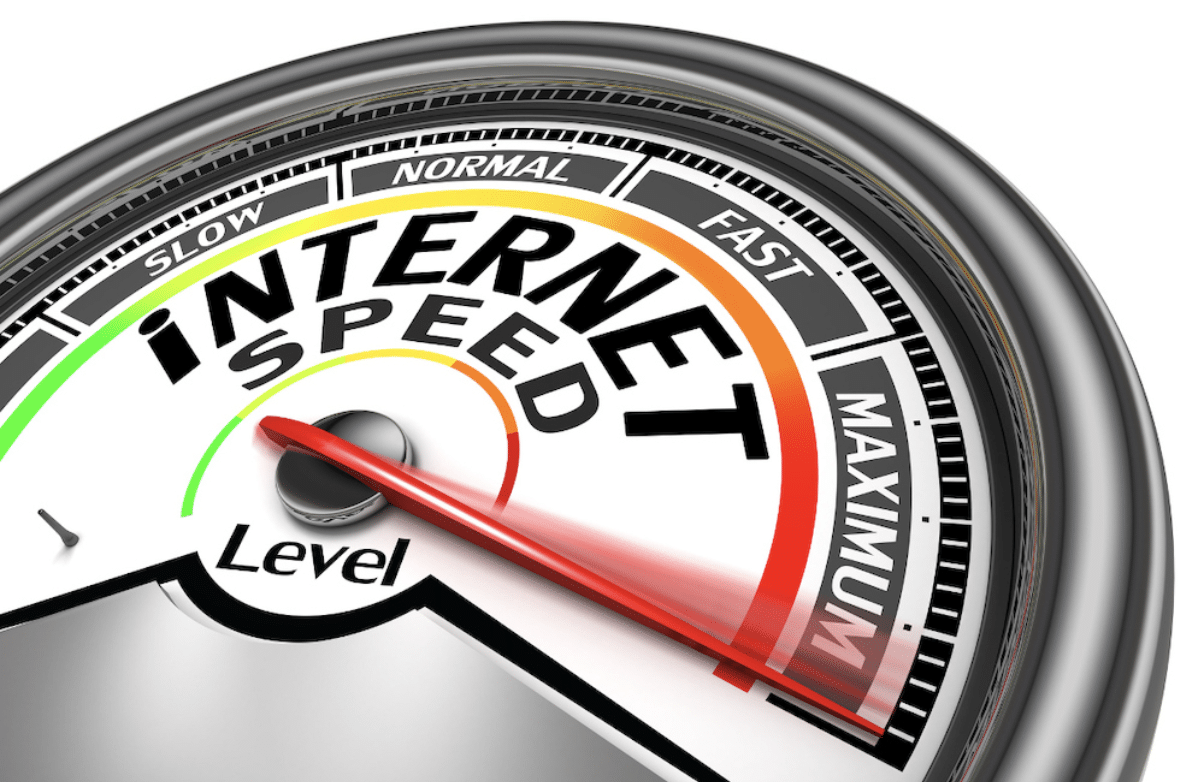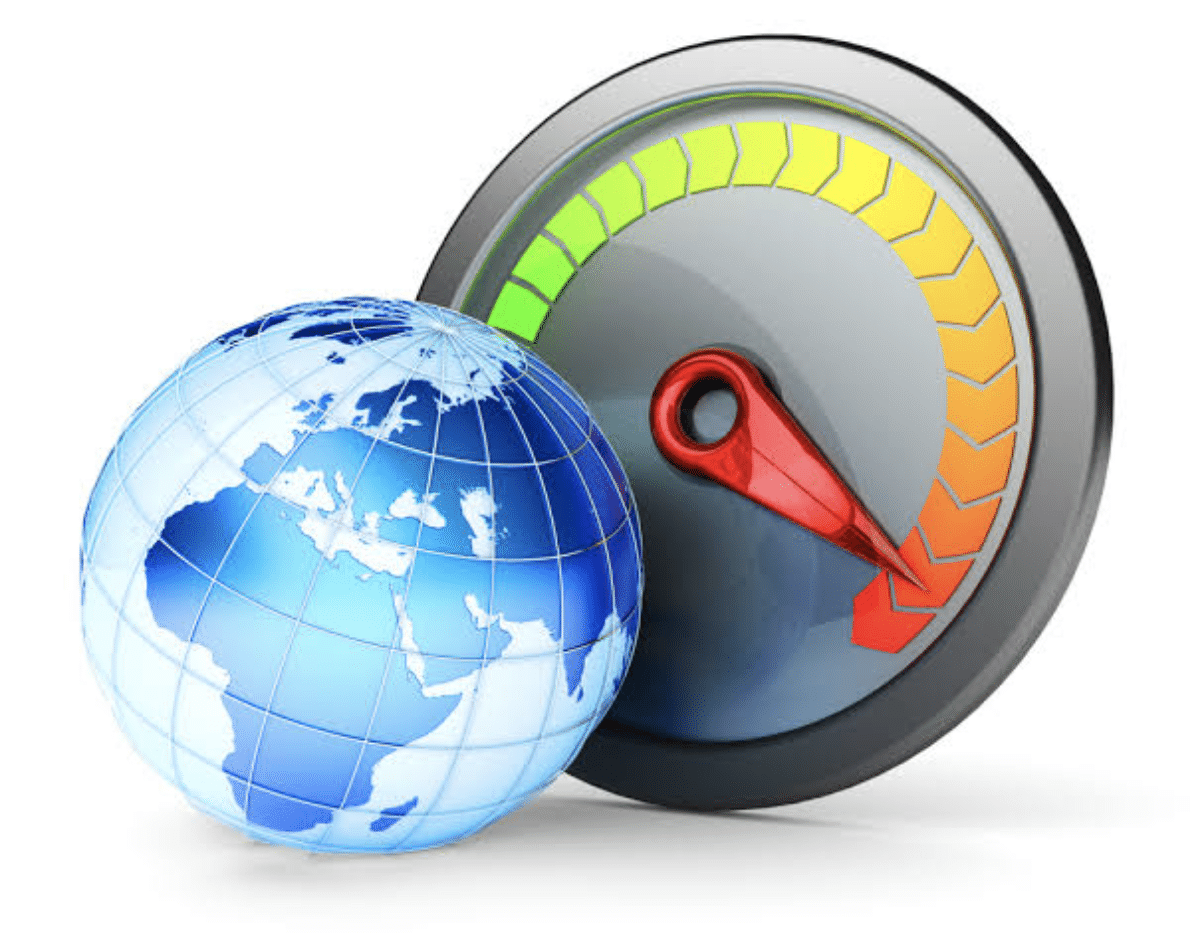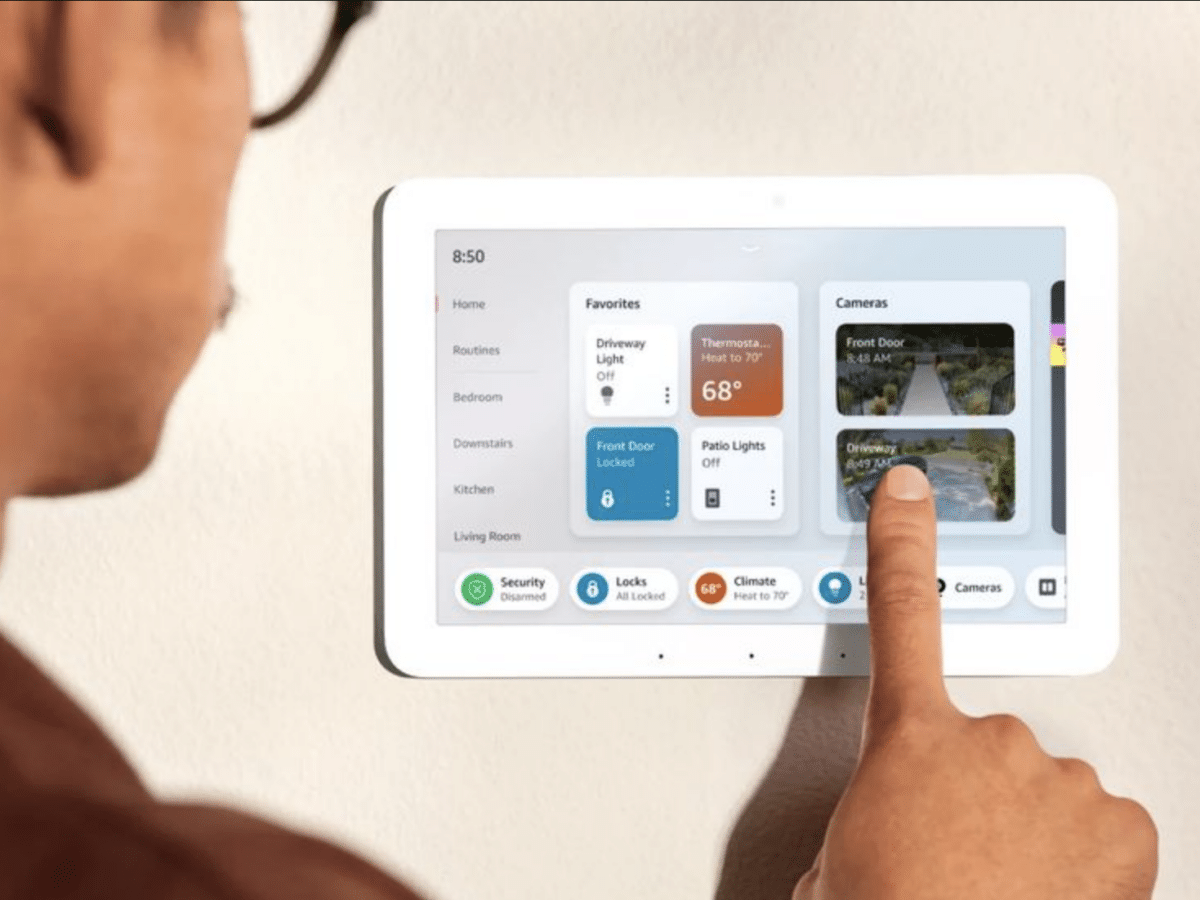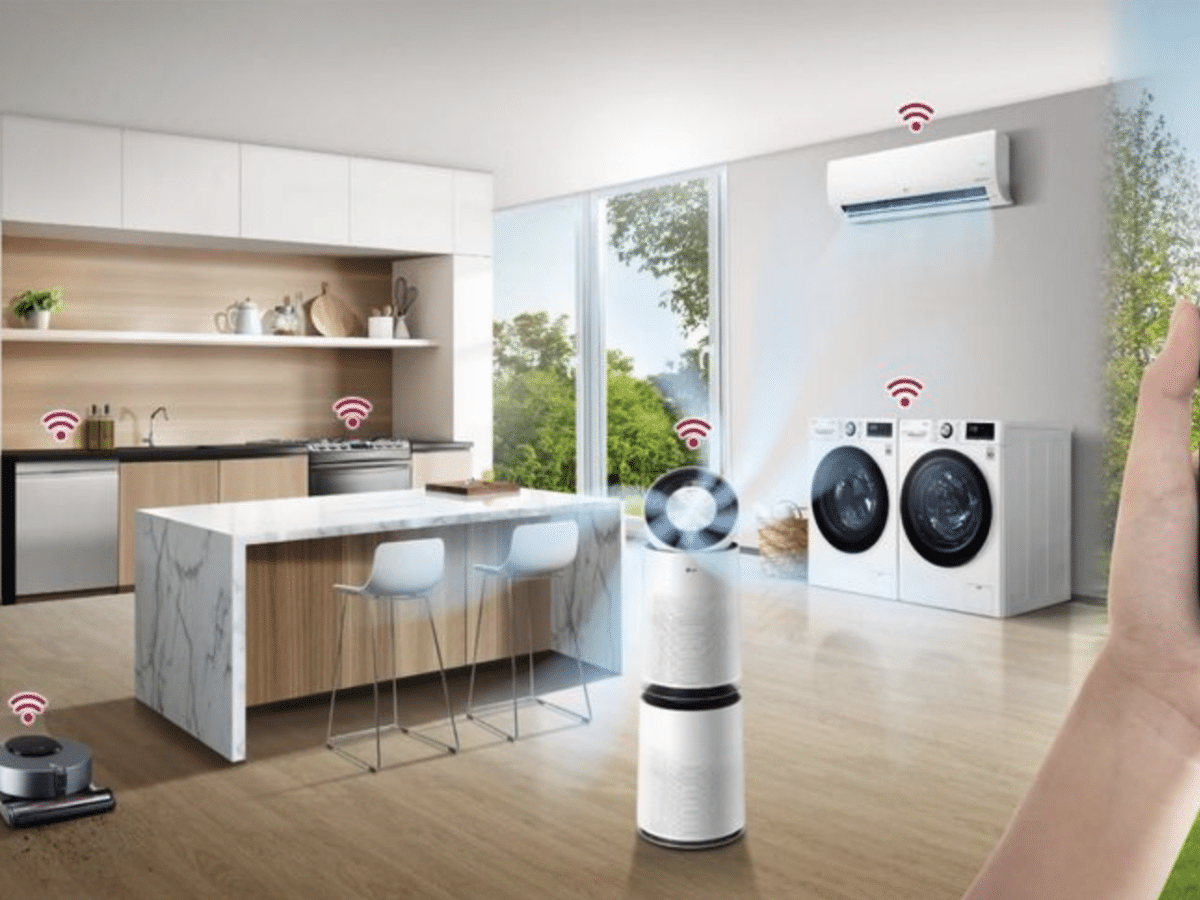Having a smart home is all about convenience and making life easier. However, to ensure your smart home is running smoothly, you need to have the right internet speed. But how much internet speed is enough for smart homes? How many megabits per second (Mbps) do you need in your home to make it smart?

Slow internet speeds can cause delays, buffering, and even disconnections, making your smart home more of an annoyance than a convenience. Factors affecting internet speed requirements include the number of devices connected, the type of devices, and the type of internet connection.
In this article, we will explore the importance of having the right internet speed for a smart home and provide tips on how to determine the appropriate internet speed for your smart home needs.
- Definition of Bandwidth and Internet Speed
- General Internet Speed Recommendations for Households
- Common Smart Home Devices and Their Speed Requirements
- Estimating Smart Home Bandwidth Needs
- Choosing the Right Internet Plan
- Balancing Internet Cost and Connectivity
- Tips for Optimizing Smart Home Internet Speed
- What Speed Is Good for Home Internet?
Definition of Bandwidth and Internet Speed
Internet speed and bandwidth are two different measurements of connection quality. Internet speed represents the speed at which you can upload documents or transmit data on your computers. It’s the total amount of data you can download or upload in one second.
Bandwidth refers to the maximum amount of data your connection can handle at any moment. It represents the number of bits, kilobits, megabits, or gigabits you can transfer in a second. It doesn’t measure network speed but the capacity of the speed.
Often, your bandwidth determines your internet speed. The more bandwidth you have, the faster your speed and data transfer. While your home internet speed can go higher or lower, it doesn’t usually exceed the specified bandwidth limit.
General Internet Speed Recommendations for Households
The Federal Communications Commission (FCC) states that a “broadband” connection should give you at least 25 Mbps download speed and 3 Mbps upload speed. But depending on your household size and internet usage, that might not be enough.
For most families, a solid internet speed is between 35-50 Mbps. This will let you work from home, attend online classes, and enjoy streaming movies and music without any hiccups. But what if you have a bigger family or use the internet a lot?

If that’s the case, experts feel you might need to increase your speed to around 100-200 Mbps. This ensures that everyone in the house can use their devices smoothly, even if they’re all online at the same time.
To help you figure out the right internet speed for your household, use this simple guideline: allocate 25 Mbps for each person. Got a family of four? That’s 100 Mbps. Therefore, 100 Mbps stands as your general home internet speed.
Remember, it’s better to have more speed than you think you’ll need, just to be on the safe side. Plus, technology is always changing, and your smart home devices might require faster internet speeds in the future. So, keep an eye on your needs and be ready to upgrade if necessary.
Common Smart Home Devices and Their Speed Requirements
Want to know how much internet speed your favorite devices need? Let’s explore the speed requirements of some common smart home gadgets. Check the table below:
| Category | Device | Speed Requirement |
| Entertainment | Smart TVs | 25 Mbps download, 5 Mbps upload |
| Gaming Consoles | 3-6 Mbps per device | |
| Climate Control | Smart ACs | Minimal bandwidth |
| Smart Thermostats | Minimal bandwidth | |
| Appliances | Smart Fridges | Minimal bandwidth |
| Smart Washers/Dryers | Minimal bandwidth | |
| Lighting & Fans | Smart Lights | Minimal bandwidth |
| Smart Fans | Minimal bandwidth | |
| Security | Smart Locks | 1 Mbps |
| Smart Cameras | 5 Mbps per 10-12 devices | |
| Smart Doorbells | 2 Mbps | |
| Voice Assistants | Amazon Echo | 1 Mbps |
| Google Home | 1 Mbps | |
| Audio | Smart Speakers | Minimal bandwidth |
| Wellness | Smart Air Purifiers | Minimal bandwidth |
| Smart Fitness Machines | 2-5 Mbps |
Looking at the table, you’ll see that the total expected internet speed at a specific time ranges from 39 to 46 Mbps. This estimate is for an average smart home with one device from each category in use. Keep in mind that your needs may vary depending on the number of devices and users in your home.
In short, understanding the speed requirements of your smart home devices will help you choose the perfect internet plan for a seamless connected experience. Continue reading to learn how.
Estimating Smart Home Bandwidth Needs
To start, most smart home devices don’t need a ton of bandwidth. In general, an internet connection with 5 Mbps upload and 25 Mbps download speeds should be enough for devices like smart speakers or thermostats. But, remember that the number of devices in your home can impact the required internet speed.
A good rule of thumb is to add 5 Mbps to your plan for every 10-12 smart devices. If you plan to install cameras, you’ll need an additional 5 Mbps. Devices like video doorbells or smart TVs may also require more bandwidth.
Example 1:
Let’s say you have a household with the following smart devices:
- 6 smart lights
- 2 smart speakers
- 1 smart thermostat
- 1 smart TV
- 1 video doorbell
In this case, you have 11 devices in total. So, you’d need a base internet speed of 25 Mbps plus an extra 5 Mbps for the devices, making it 30 Mbps. Since the video doorbell and smart TV require more bandwidth, you may want to increase it to around 35-40 Mbps for smooth operation.
But it’s not always that simple. Let’s consider another example below.
Example 2:
Imagine a couple who are planning to move into a new home and want to turn it into a smart home. They’ve heard about the rule of thumb of adding 5 Mbps for every 10-12 smart devices, but they’re not sure how to apply it to their specific situation. Let’s help them make an informed decision based on their desired smart home setup:
Their planned smart home includes:
- 10 smart lights
- 4 smart speakers
- 2 smart thermostats
- 1 smart TV
- 1 smart fridge
- 1 smart washer/dryer
- 3 smart cameras
- 1 smart door lock
This setup has a total of 23 smart devices. Now, let’s apply the rule of thumb:
- Base internet speed (for general use): 25 Mbps
- Additional speed for the first 10 devices: 5 Mbps
- Additional speed for the next 10 devices: 5 Mbps
- Extra speed for 3 smart cameras: 5 Mbps (assuming 5 Mbps for every 10-12 devices, we’ll consider 5 Mbps for the 3 cameras as well, as they require more bandwidth)
- Adding up the numbers, we have 25 Mbps + 5 Mbps + 5 Mbps + 5 Mbps = 40 Mbps.
However, the couple should also consider that the smart TV might need more bandwidth for streaming high-quality content. In this case, they could increase their internet speed plan to 50 Mbps to ensure a smooth and uninterrupted experience for all their smart home devices.
Analysis of the Examples
The two examples demonstrate how the rule of thumb for adding 5 Mbps for every 10-12 smart devices can help smart home buyers make informed decisions about their internet speed requirements. By breaking down the number of devices and their specific bandwidth needs, they can select an appropriate internet plan that caters to their smart home setup.
To find the perfect internet speed for your smart home, consider talking to an expert or using an online bandwidth calculator. For those with specific security needs, consult professional security installers who can help ensure your safety devices run smoothly, regardless of your internet connection.
Choosing the Right Internet Plan
There are four main types of internet connections to consider for your smart home: cable, fiber, DSL, and satellite connectivity. Let’s compare the different types of internet connections available and see which one is best suited for your needs.
- Cable Internet: This option uses coaxial cables to deliver speeds from 10 Mbps to 1 Gbps. While it’s widely available and offers high speeds, its reliability may suffer during peak times.
- Fiber Internet: This choice utilizes fiber-optic cables, boasting the fastest speeds ranging from 100 Mbps to 1 Gbps. Although it’s the most reliable option, its availability is limited in some areas.
- DSL Internet: Using telephone lines, DSL offers speeds between 1 Mbps and 100 Mbps. It’s widely available and affordable but may not provide the fastest connection.
- Satellite Internet: With speeds from 12 Mbps to 100 Mbps, satellite internet uses a dish to transmit data. It’s available in remote areas but can be affected by weather conditions and isn’t the fastest choice.
To pick the right plan, consider factors like speed, reliability, availability, and cost. While DSL is the cheapest for lower-speed plans and cable for higher speeds, fiber is the most reliable option. Satellite, on the other hand, is the least reliable and the most expensive.
Balancing Internet Cost and Connectivity
Since internet costs are mostly on the high, you might be looking for ways to balance cost and connectivity. One effective solution is load balancing, which helps distribute internet traffic optimally across multiple broadband connections. This method ensures a better experience for users accessing various internet applications at the same time.

Load balancing routers are available in the market, and some are quite affordable, with prices under £40. However, keep in mind that the saying “You get what you pay for” often applies. Many users have reported issues with cheap routers, so it’s wise to research and invest in a reliable option.
Another way to balance cost and connectivity is by combining multiple internet connections to boost speed. Load balancing routers can help with this by using multiple IP addresses to download data. Well-known companies like Cisco offer load balancing routers, but you can also find budget-friendly options from brands like TP-Link.
Tips for Optimizing Smart Home Internet Speed
To optimize your home internet speed, you need to first check your current download speeds to make sure your router can handle the load. Know that many smart home devices don’t need as much speed as you’d think.
Here are some cost-effective ways to optimize your internet for smart home purposes:
- Centralize your router: Place your router in a central location to provide better coverage throughout your home.
- Avoid signal interference: Keep your router away from other electronics and appliances that might mess with the signal.
- Expand your Wi-Fi range: Use a Wi-Fi extender or mesh network to boost your signal’s reach.
- Upgrade your router: Consider investing in a higher-quality router for better performance.
- Use wired connections: Connect devices that need lots of bandwidth (like gaming consoles or streaming devices) directly to your router with an Ethernet cable.
- Limit device connections: Reduce the number of devices connected to your Wi-Fi to lessen network congestion.
- Separate your networks: Create a separate network for smart home devices to prevent interference with other devices on your main network.
- Update your firmware: Make sure your router’s firmware is up-to-date for optimal performance.
- Analyze Wi-Fi signals: Use a Wi-Fi analyzer app to find and fix any interference issues.
If you’ve tried these tips and still experience slow speeds, it might be time to consider upgrading your internet plan. But before you do, analyze your needs and weigh the costs against the benefits of faster internet.
What Speed Is Good for Home Internet?

The right internet speed for your smart home depends on the number of devices, their specific bandwidth requirements, and your household’s general internet usage. By understanding these factors, you can choose an appropriate internet plan and optimize your Wi-Fi network for a seamless smart home experience. Balancing cost and connectivity requires strategic planning, such as investing in load balancing routers or implementing Wi-Fi optimization tips. Keep an eye on your evolving needs and be ready to upgrade your internet plan if necessary, so you can enjoy a hassle-free connected lifestyle.






